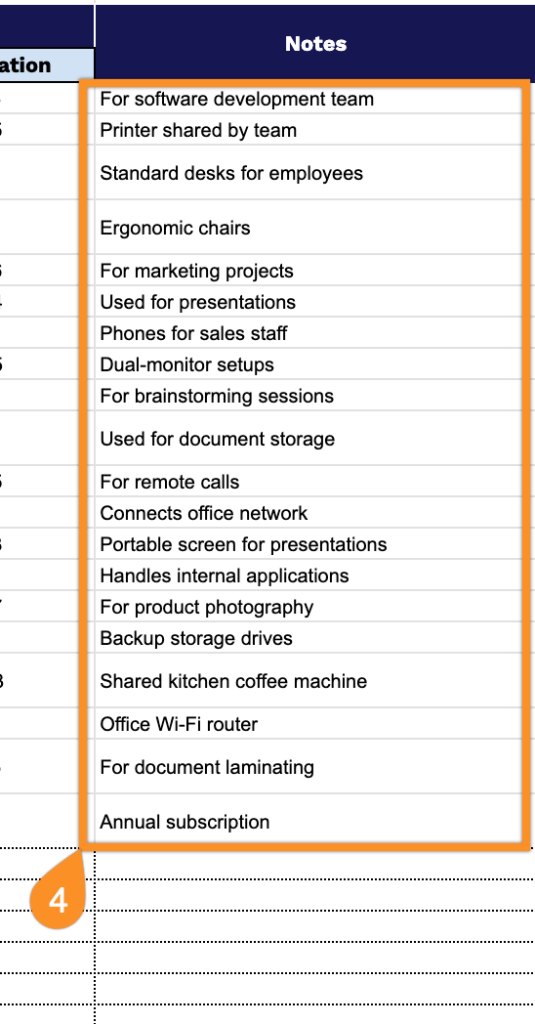Every organization accumulates assets over time. Some are carefully acquired, others inherited or gradually forgotten.
Yet, knowing exactly what you own, where it resides, and its condition remains surprisingly difficult for businesses of all sizes. The gap between acquisition and accountability often means resources go underutilized, opportunities for optimization slip by, and planning happens without complete information.
A structured approach to asset management doesn’t require enterprise software or dedicated teams. Sometimes the most effective solutions are the simplest ones.
Our free template offers a straightforward starting point for organizations ready to bring visibility and order to their asset inventory.
Quick Jump
ToggleWhat Is an Asset Management Spreadsheet?
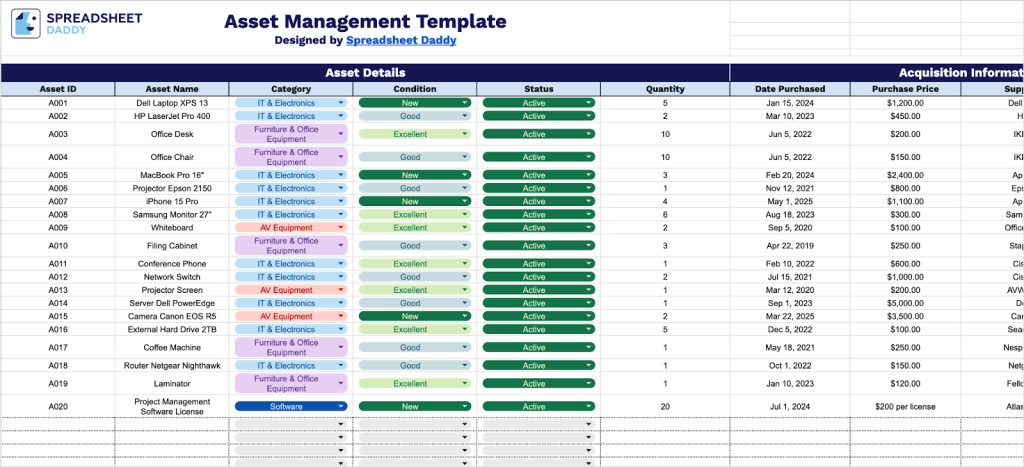
An asset management spreadsheet is a digital tool that helps organizations track and monitor their physical and financial assets over time.
Businesses use these spreadsheets to stay organized, make better decisions about repairs and replacements, and ensure they’re getting the most value from their assets.
Download Spreadsheet Daddy’s Free Asset Management Spreadsheet
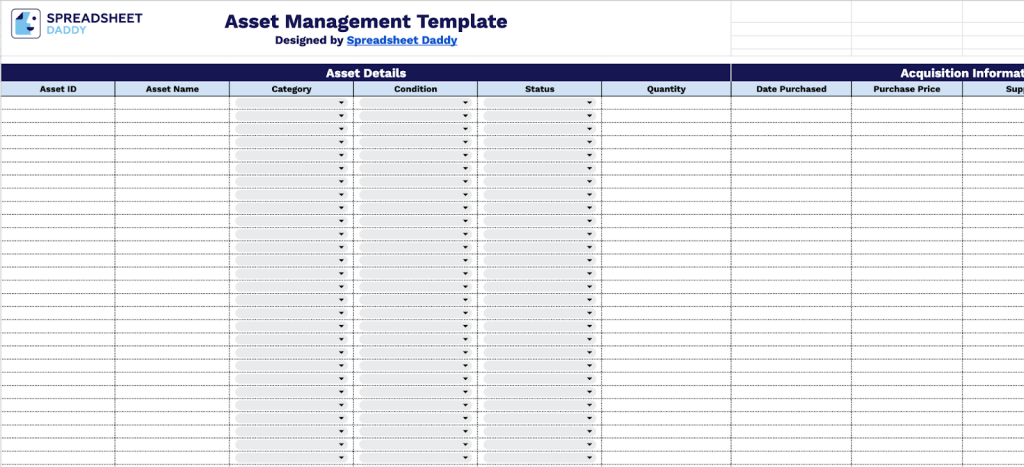
Our Asset Management Template provides a comprehensive system for tracking your assets with essential fields.
You can easily customize this template to fit your specific needs by adding new columns for additional data points or removing columns that aren’t relevant to your asset tracking requirements.
What’s included
- Comprehensive asset identification system: Asset ID and Asset Name fields enable precise tracking of individual items, while the Category column allows organization by type (equipment, technology, furniture, vehicles, etc.), making it easy to filter and locate specific assets across your entire inventory.
- Condition and status monitoring: Dedicated Condition and Status columns help you assess asset health and availability at a glance. Track whether items are operational, need maintenance, are in use, available, or retired, enabling proactive lifecycle management and informed replacement decisions.
- Complete acquisition documentation: The Date Purchased and Purchase Price fields maintain a comprehensive financial history of each asset, supporting accurate depreciation calculations, budget planning, and total asset value reporting for accounting and audit purposes.
- Supplier and warranty tracking: The Supplier column centralizes vendor information for streamlined reordering and relationship management. At the same time, the Warranty Expiration field ensures you never miss coverage periods, helping you plan timely renewals or replacements before warranties lapse.
- Flexible quantity and notes management: The Quantity field tracks multiple units of the same asset type, and the Notes section records location details, assigned users, maintenance history, special handling requirements, or any other relevant information that supports comprehensive asset documentation without additional systems.
How to Use Our Asset Management Spreadsheet Template
1. Start organizing your asset inventory by obtaining this template in Excel or PDF format or making a duplicate copy within Google Sheets.
2. Complete the Asset Details section by entering all essential asset information:
- Asset ID: Enter the unique identifier assigned to each asset for tracking and reference purposes.
- Asset Name: Specify the complete name and description of the asset being recorded.
- Category: Select the appropriate asset classification (IT & Electronics, Furniture & Office Equipment, Vehicles & Transportation, Machinery & Tools, etc.).
- Condition: Document the current physical state of the asset (New, Excellent, Good, Fair, etc.).
- Status: Record the operational status (Active, In Maintenance, In Storage, Retired, Lost, etc.).
- Quantity: Enter the number of identical units for this particular asset entry.
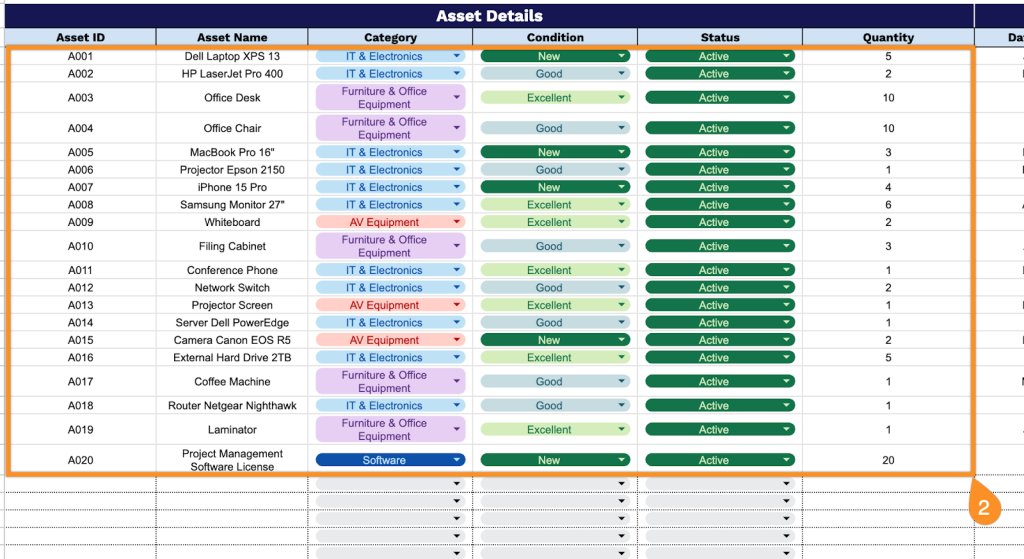
3. Document acquisition details in the Acquisition Information section for financial tracking:
- Date Purchased: Record when the asset was acquired or received.
- Purchase Price: Enter the total cost paid to acquire the asset for depreciation and valuation purposes.
- Supplier: Include the name of the vendor or provider from whom the asset was purchased.
- Warranty Expiration: Specify the date when the manufacturer or supplier warranty coverage ends.
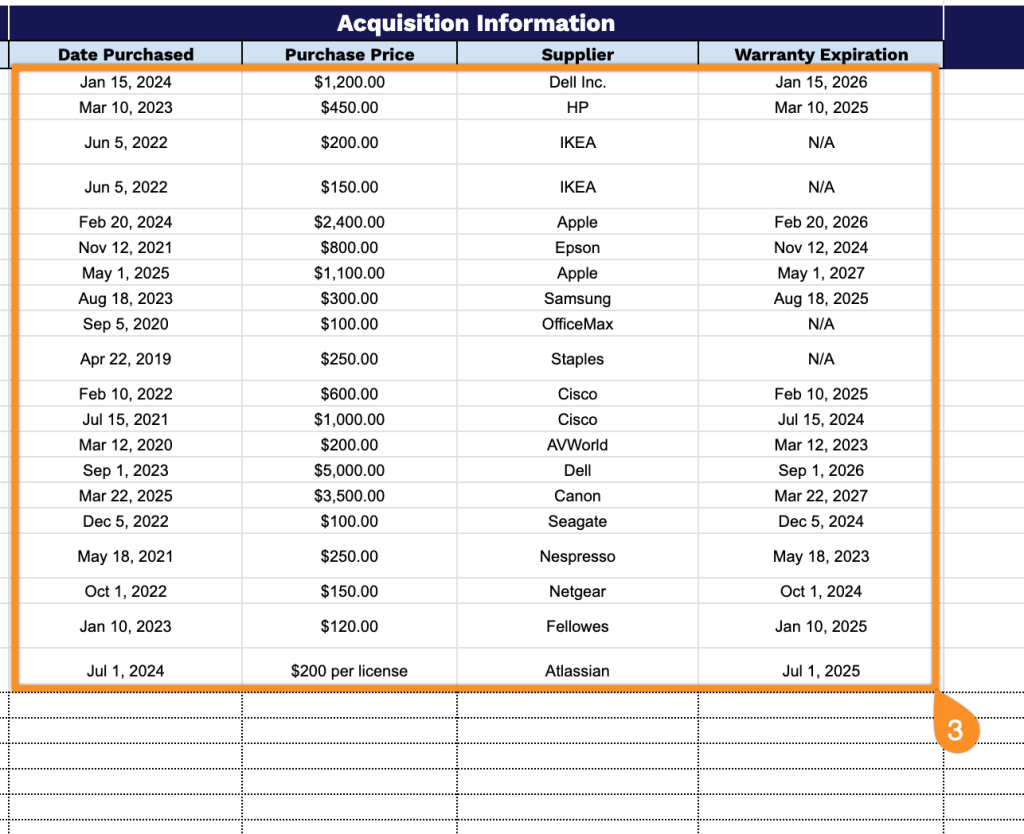
4. Provide supplementary details in the Notes section where appropriate.
